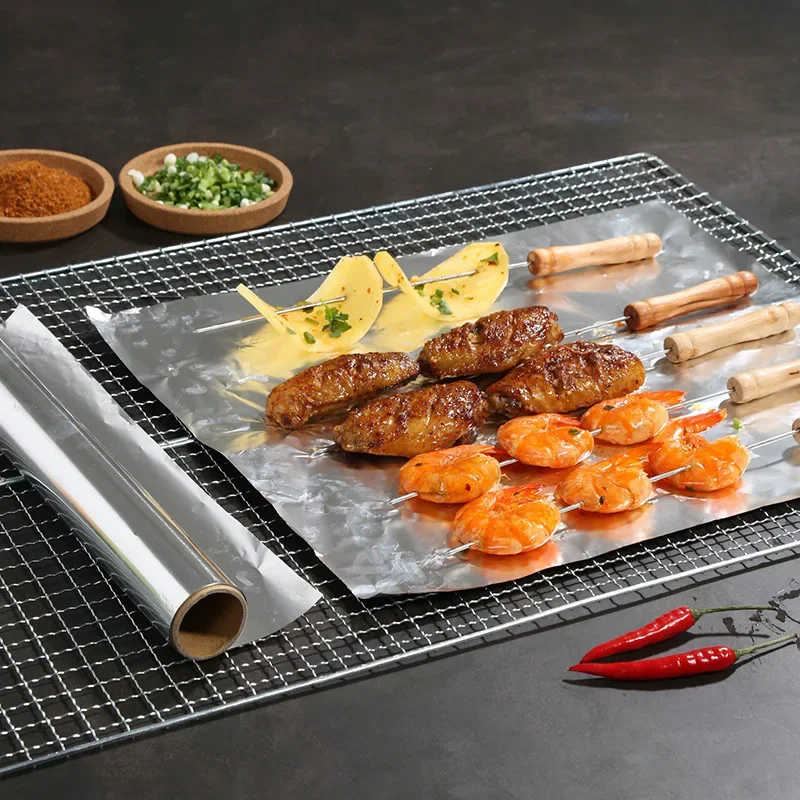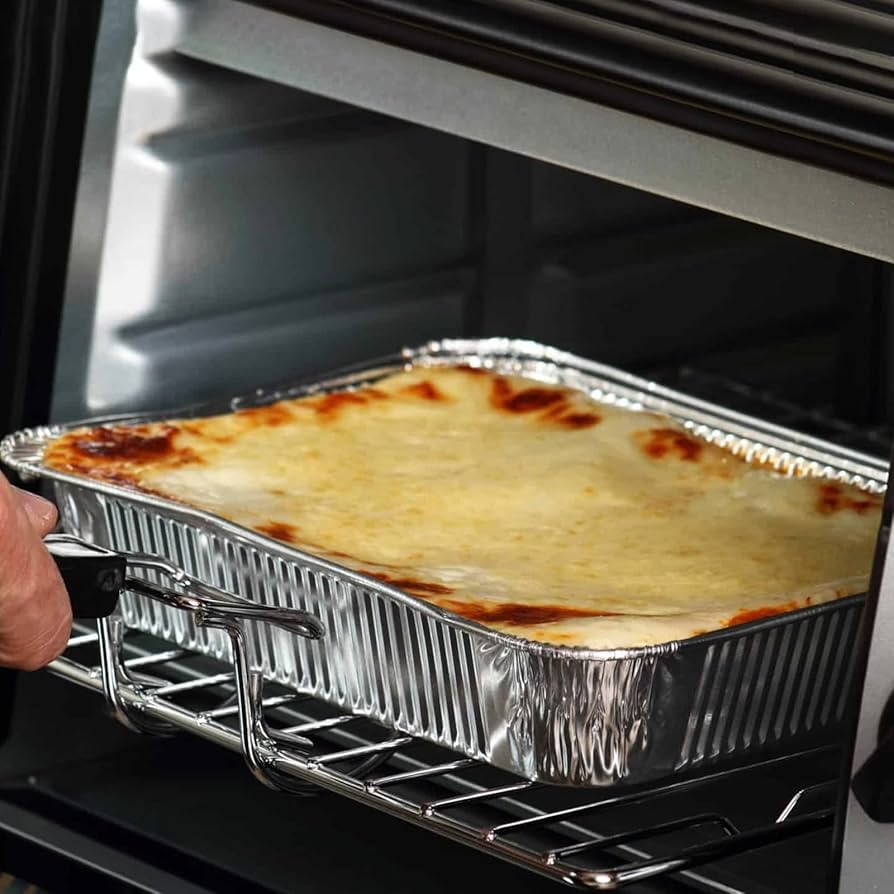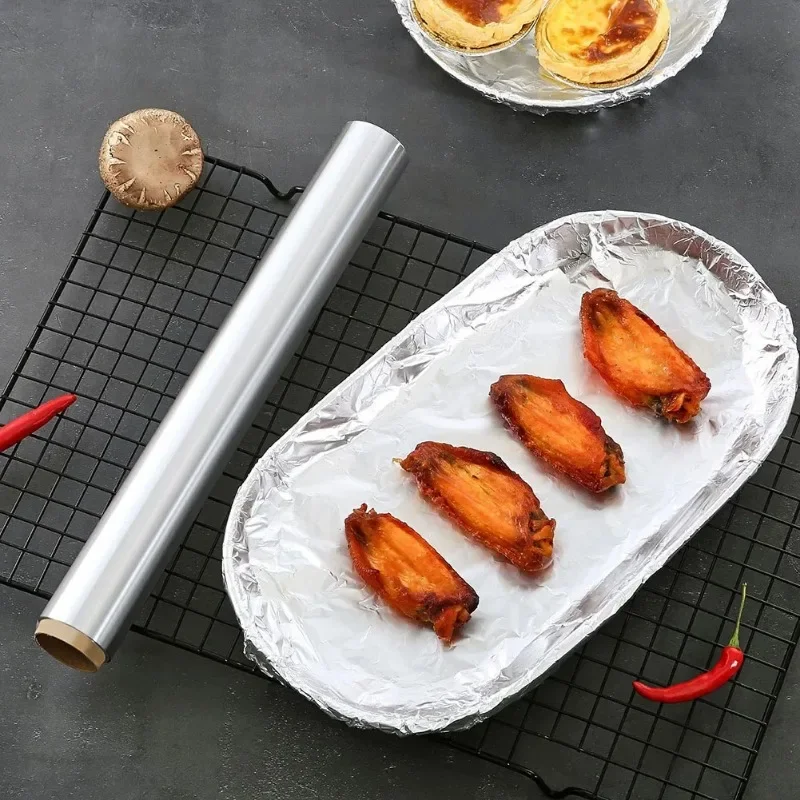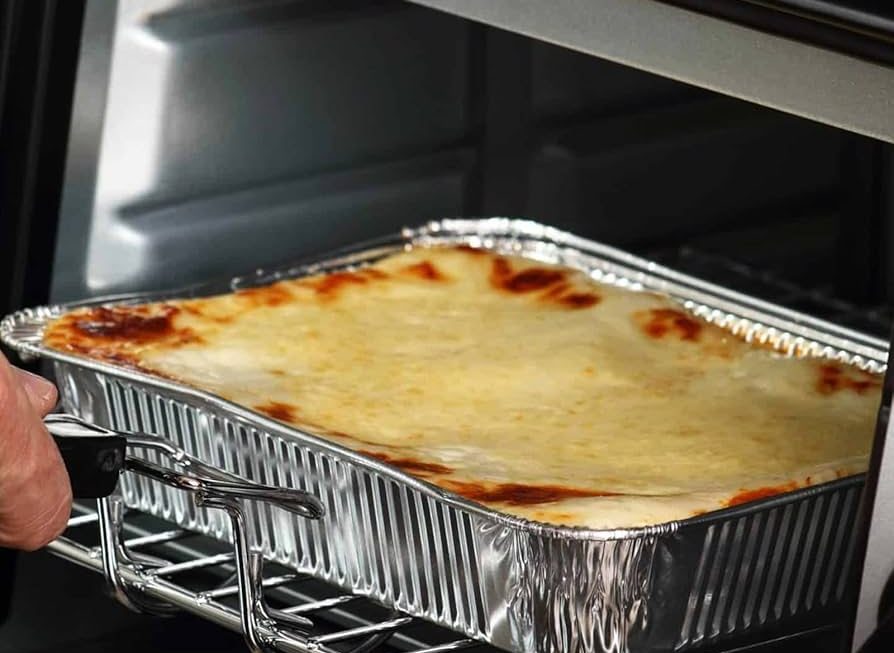Introduction
Aluminum foil is a common item found in kitchens around the world. People use it to wrap food, line baking sheets, and cover leftovers. However, many individuals wonder about its safety in the oven. Can u put aluminum foil in the oven? The simple answer is yes, but there are important factors to consider. This article will explore the risks and benefits of using aluminum foil in the oven, practical tips, and alternative methods for cooking.

The Basics of Aluminum Foil
What Is Aluminum Foil?
Aluminum foil is a thin sheet of aluminum. Manufacturers create it by rolling out aluminum until it is very thin. This process produces a versatile material that has many uses. People use aluminum foil in cooking, baking, and food storage. Its unique properties make it a popular choice. For example, it is lightweight, flexible, and can withstand high temperatures.
How Is Aluminum Foil Made?
The production of aluminum foil involves several steps. First, manufacturers extract aluminum from bauxite ore. They smelt the aluminum to remove impurities. Next, they roll it into thin sheets. This process involves multiple passes through specialized rolling machines. The foil can be made in various thicknesses, catering to different needs.
Aluminum foil is not only durable but also non-toxic. This means it is safe for food contact. It does not leach harmful chemicals into food, making it suitable for cooking. Despite its benefits, some questions about its use, particularly in the oven, remain.
Can You Use Aluminum Foil in the Oven?
The Safe Use of Aluminum Foil
When used correctly, aluminum foil is safe for use in the oven. Many people use it to line baking sheets or to wrap food. It helps to prevent sticking and facilitates easier cleanup. When wrapping food, it helps to retain moisture. This is particularly useful for foods like chicken or fish that can dry out during cooking.
However, there are guidelines to follow. Always make sure the foil does not touch the heating elements. This may cause the foil to melt or create sparks. When lining baking sheets, ensure that the foil remains flat against the surface. Crumpling or folding the foil can create air pockets, which may lead to uneven cooking.
Potential Risks of Using Aluminum Foil
Despite its benefits, there are potential risks associated with using aluminum foil in the oven. One concern is the possibility of aluminum leaching into food. Studies suggest that higher levels of aluminum may pose health risks. However, most research indicates that cooking with aluminum foil in moderation is safe.
Another risk involves overheating the foil. If the foil comes into contact with the oven’s heating elements, it can ignite. This risk increases if the foil is crumpled and not laying flat. Additionally, the reflective nature of aluminum can reflect heat back onto the food. This may cause some foods to cook unevenly.

Practical Tips for Using Aluminum Foil in the Oven
Proper Techniques
When using aluminum foil in the oven, follow these practical techniques to ensure safe and effective use. First, always use heavy-duty aluminum foil for cooking. This type of foil is thicker and more durable. It is less likely to tear or create holes during cooking. Use heavy-duty foil when wrapping food to keep moisture in and fluids out.
Second, avoid using aluminum foil to line the bottom of the oven. Doing so can block heat and cause uneven cooking. The foil can also reflect heat back onto the heating elements, causing overheating. Instead, line baking sheets or use a roasting pan to catch drippings.
Wrapping Food Safely
When wrapping food, create a tight seal to prevent moisture loss. Tightly wrap meats and vegetables to lock in flavors and juices. If cooking acidic foods, such as tomatoes or citrus, use parchment paper as an additional layer. This can help prevent any potential leaching.
Use aluminum foil to create packets for foods like fish or vegetables. This method helps to steam the food and keep it moist. To do this, place the food in the center of a piece of foil and fold the edges tightly. This technique allows steam to circulate inside the packet.
Alternatives to Aluminum Foil
Other Cooking Materials
If you prefer not to use aluminum foil, there are several alternatives available. Parchment paper is a popular choice for baking. It provides a non-stick surface without the risks associated with aluminum foil. Parchment paper is also heat-resistant and can be used for roasting and baking.
Silicon baking mats are another excellent option. They provide a reusable, non-stick surface that is perfect for baking. These mats can withstand high temperatures and are easy to clean. They also help to reduce waste since they are reusable, making them an environmentally friendly choice.
Cooking without Foil
If you want to avoid using any type of foil, consider cooking methods that do not require it. For example, use glass or ceramic baking dishes for roasting. These materials can withstand high temperatures and distribute heat evenly. When baking, use a covered Dutch oven to retain moisture without additional coverings.
Additionally, investing in quality cookware can eliminate the need for aluminum foil. High-quality pots, pans, and baking sheets can efficiently manage heat and prevent sticking without needing foil.
Can Aluminum Foil Be Used in a Convection Oven?
Convection ovens rely on a fan to circulate hot air around the food, which leads to faster and more even cooking. When using a convection oven, you may wonder if aluminum foil can still be used effectively.
How Aluminum Foil Affects a Convection Oven
- Interference with Airflow: Just like in a regular oven, aluminum foil can block the airflow in a convection oven. Since convection ovens rely on the circulation of hot air to cook food evenly, covering food with foil or placing foil in the oven can interfere with this process.
- Using Foil for Protection: If you want to use aluminum foil in a convection oven, it’s best to use it sparingly and for specific purposes, such as covering food to retain moisture or prevent over-browning. Avoid covering large areas of the oven with foil.
Best Practices for Using Aluminum Foil in a Convection Oven
If you’re using aluminum foil in a convection oven, here are a few tips to follow:
- Use Foil for Moisture Control: If you’re roasting meat or vegetables, you can wrap them in foil to retain moisture. Just be sure not to cover the entire pan or tray, allowing air to circulate freely.
- Avoid Blocking the Fan: Be mindful of where you place the foil in the oven to avoid blocking the convection fan. The fan needs space to circulate air around the food to cook it properly.
By following these guidelines, you can safely use aluminum foil in a convection oven without compromising its performance.

Conclusion
In conclusion, aluminum foil can be safely used in the oven with proper precautions. It is essential to understand the risks and how to mitigate them for safe cooking. Familiarizing yourself with the different techniques for using foil can enhance your cooking experience.
Moreover, exploring alternatives to aluminum foil can provide additional benefits to your cooking routine. Materials like parchment paper and silicone mats ensure safety and provide eco-friendly options. Ultimately, understanding how to use aluminum foil safely and efficiently plays a vital role in optimizing your cooking experience. Always prioritize safety and enjoy the versatility that aluminum foil offers in the kitchen!



